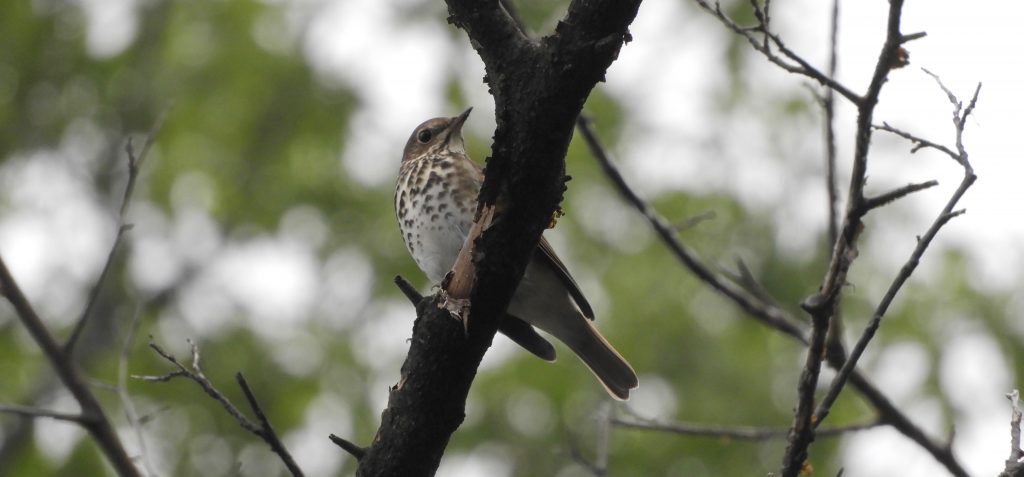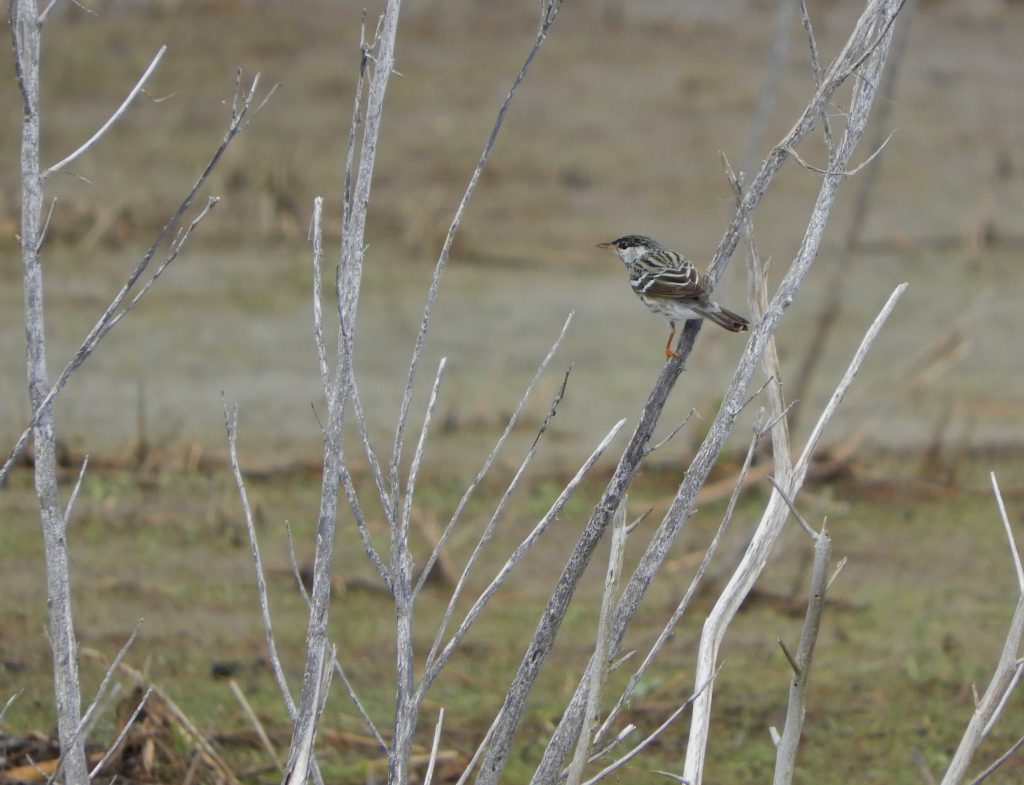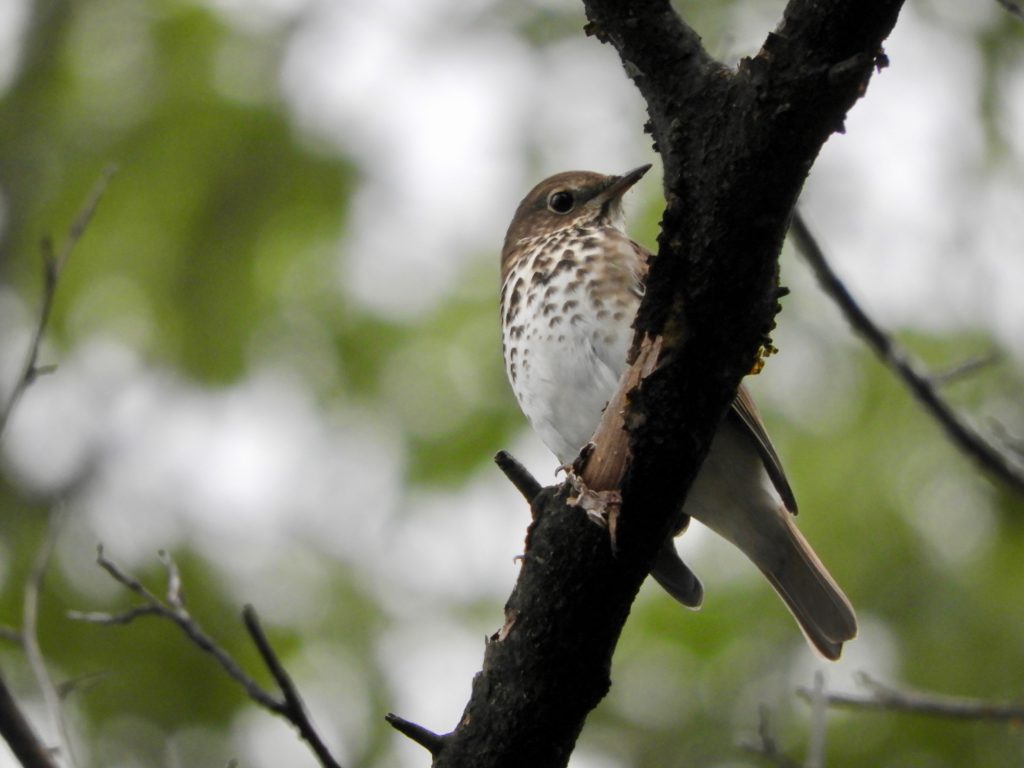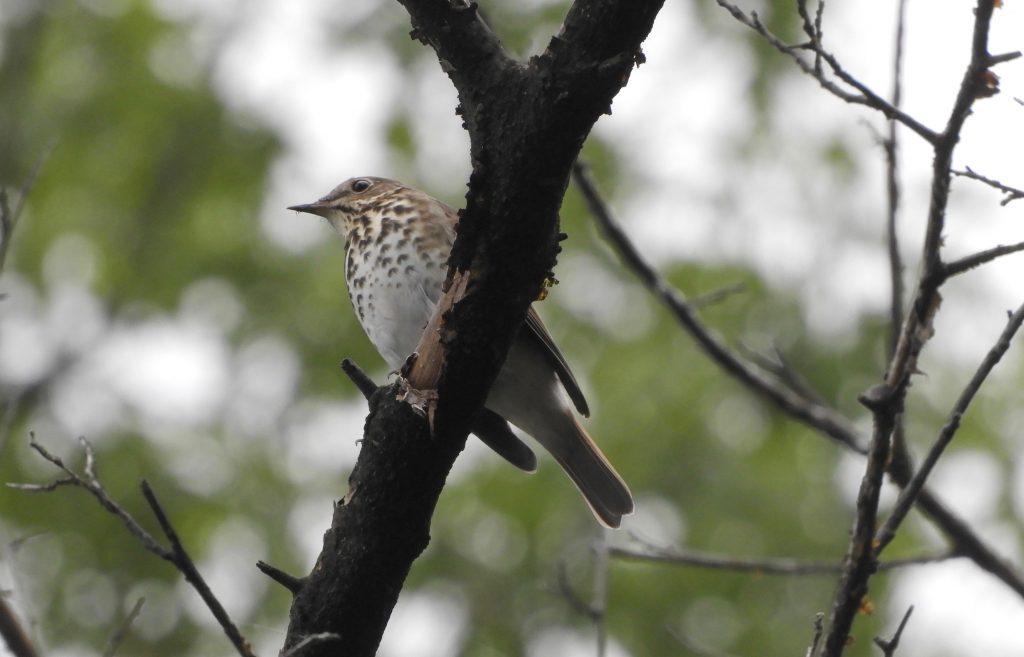
October 5 2021. Burlington. I have been exploring and investigating a piece of private and hard-to-access Lake Ontario shoreline. It is a missing piece of the puzzle for me and I have long wanted to get to know it. It is inclined to be trashy where plastics and old logs wash up, but deliciously wild and overgrown away from the water’s edge. Thick leafy tangles, fallen trees, grape thickets, shrubs and wetlands all make good bird habitat and when a place is virtually inaccessible, the birding is as good as it can be. A week ago, a friend and I spent a busy morning there trying to keep up with the migrant activity, it was rewarding if baffling at times and much went unidentified. (Identification is, of course, the birder’s raison-d’etre.)
Today was different. The weather had shifted from late summer to early fall, it was damp, still, and overcast. I was happy to spend time exploring without the distraction of waves of fall migrants. Still, there were some to be found, numerous White-throated Sparrows and Golden-crowned Kinglets. A few warbler species: one Common Yellowthroat, several Yellow-rumped Warblers, a Blackpoll Warbler, and in the probable category: Orange-crowned and Wilson’s Warblers. (Not bad – now that I come to write it down). A large, dark bird labouring just above wave height turned out to be an adult Bald Eagle and, at the other end of the scale, in deep cover, was a tiny Winter Wren.

It’s always worth paying attention to the mighty Blackpoll Warbler. I didn’t see todays for very long, just long enough to clearly note a couple of distinctive field marks, including bright yellow feet, and to spare a thought for it on its journey ahead. It is a bird that breeds in the boreal forest of Alaska and Canada and winters in the Amazon Basin. It is on its way to the Atlantic coast, somewhere between Maine and Cape Hatteras, NC. Later this month, once refuelled, it will launch itself south-eastwards over the Atlantic for 2 or 3 days until the North-east trade winds carry it on to the Amazon Basin, a journey estimated to take around 90 hours. Think about it.

Best bird and certainly My Bird of the Day, was this Gray-cheeked Thrush. It was one of several birds that kept flying away in front of me, this is perhaps the most maddening thing birds do. They see me long before I see them of course, and then as I draw closer, flit – and they’re gone. All I get is that fleeting vanishing movement. Hoping to catch up /sneak-up on such birds is usually fruitless. Thrushes, in particular, can be very elusive and usually prefer to head into deep shade, but I was surprised when todays flew up and close, rather than down and away. I made several attempts to photograph it but, as is so often the case, it darted away just when I’d got it framed and in focus. I nearly gave up but it finally took up station high above me and stayed long enough for me to get some decent shots, and to confirm its identification.
